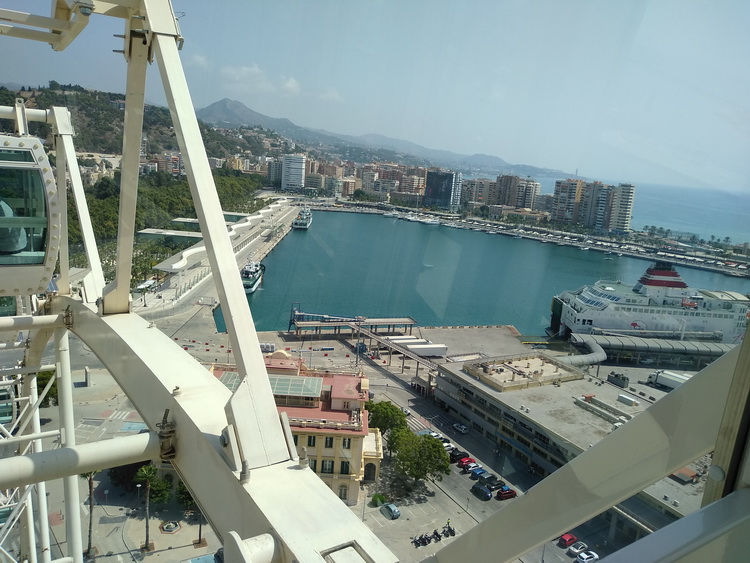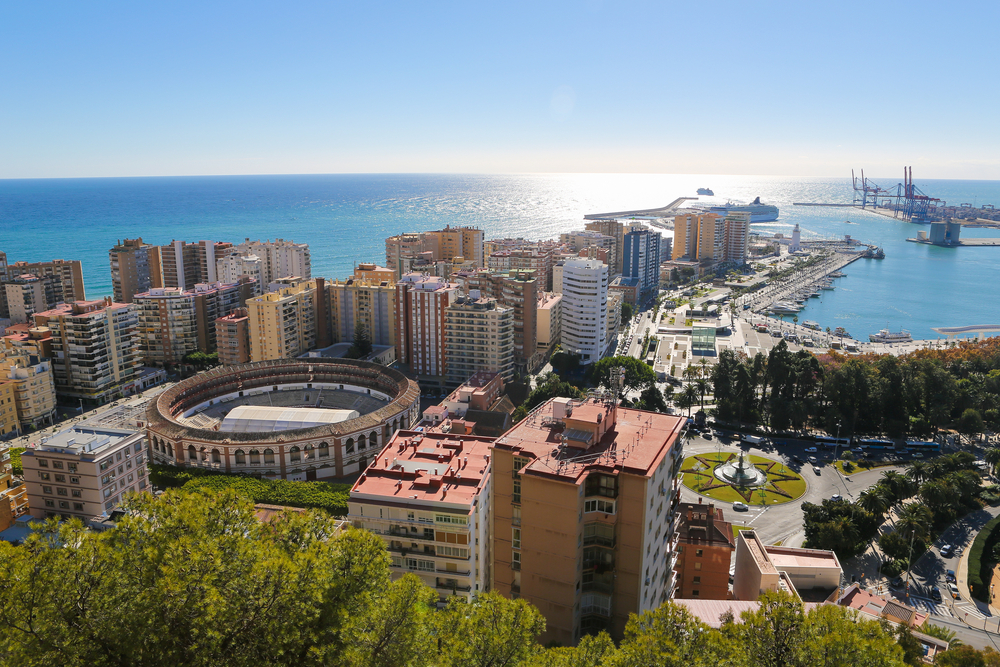
Everything you need to know for 2 or 3 days in Málaga
Birthplace of Pablo Picasso and gateway to the Costa del Sol, Malaga is the most “happening”city of Spain. Though historically best known for its warm climate and
beaches, in recent years the city has earned itself a reputation as a cultural and
gastronomic destination second to none.
You’ll find a surprising collection of things to see and do in Málaga including top-flight museums and monuments, such as the Museo Picasso, the Museo Carmen Thyssen and the Moorish 11th-century Alcazaba citadel and the restaurants and bars, offering delicious fishy treats, tempting tapas and the typical gazpacho, will have you coming back for more.
For a bit of ‘bling’, head down the famous Calle Molina Lario to the recently
redeveloped port, with its designer stores and fancy restaurants or head east
along the beaches to Pedregalejo for quite the opposite – the simple delights of
grilled fish and local wine served right on the beach.
Table of Contents
Málaga Highlights – 12 things to see and do in Málaga
- MUSEUMS & ART GALLERIES
- Alcazaba de Málaga
- Gibralfaro Castle
- Roman Theatre of Málaga
- Málaga Cathedral
- Atarazanas Market
- Mercado de la Merced
- Muelle Uno – the Port of Málaga
- Málaga’s beaches
- Pedregalejo
- English Cemetery
- Calle Larios
Things to See and Do in Málaga Province – Out and About
Practicalities – Frequently asked questions about things to see and do in Málaga
Málaga Highlights
MUSEUMS & ART GALLERIES
Carmen Thyssen Museum Málaga
Our favourite of all the Málaga galleries, the Carmen Thyssen Museum, inaugurated in 2011, is located in the Villalón Palace, a 16th century building right in the historic center of Malaga.
The museum’s permanent collection is made up of works that belong to 19th century Spanish artists, in particular Andalusian paintings. In addition, it has temporary exhibitions and organizes cultural and educational activities.
The collection is divided into stages: Old Masters, Romantic Landscape and Costumbrismo, Précieux Style and Naturalist Painting and Fin-de-Siècle. The collection houses important works by artists such as Zurbarán, Diego de Regoyos and Julio Romero de Torres.
Modern art lovers may also want to visit the Centro de Arte Contemporanea de Málaga
Centre Pompidou
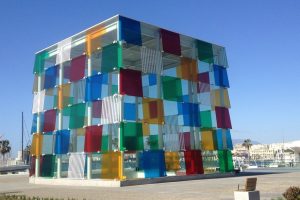
Modern art lovers may also want to visit the Centro de Arte Contemporanea de Málaga
Picasso Museum and Casa Natal
Malaga is the birthplace of the famous artist Pablo Picasso, though he left at 14 years of age. The museum houses pieces from very period and genre and although it doesn’t have many of his better-known pieces, is a must-visit for art lovers.
The Museo Casa Natal (Birthplace Museum) de Picasso offers a walk through the life of Málaga’s most global artist by looking at the details of his childhood in Málaga. The rooms show us original objects, family memories and works from his collection. The Spanish government declared it a Historic-Artistic Monument of National Interest in 1983.
The museum is set on the Plaza de Merced, a little distance from the town centre, which has some nice bars and eateries.
Interactive Music Museum
For kids of all ages this museum is full of fun. Housed in the 18th-century Palacio del Conde de Navas, it has a collection of nearly 1,000 pieces that include musical instruments and objects from all eras of history and an array of cultures to learn more about the history and evolution of music.
The museum is interactive and lets visitors use multimedia resources to get an inside look into the history of musical instruments.
Archaeological Museum of Málaga
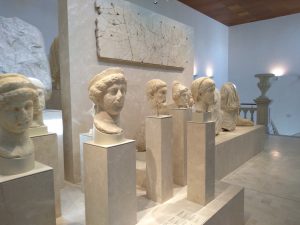
There’s a viewpoint as well as a nice café with a small terrace offering the best view of the Alcazaba (the perfect spot to escape the crowds!).
Alcazaba de Málaga
Málaga’s ancient Moorish Fortress
This ancient Moorish fortress built as a place-cum-fortress by the Hammudid and Nasrid Moors between the 10th and 15th century, offers stunning views of the city and the sea. One of the best-preserved examples of Moorish architecture In Spain, the palace has beautiful gardens, fountains, and historic artefacts and is connected to the Castle above by a walled corridor.
Gibralfaro Castle
Panoramic views
Situated uphill from the Alcazaba, the Gibralfaro Castle offers panoramic views of the city and the coastline. Built in the 10th century on a site occupied back to Phoenician times the castle was extended in the 14th century and linked to the Alcazaba before falling to the Catholic Kings in the 15th century (the first conflict where both sides used gunpowder).
It’s a great spot to explore the history of Malaga and enjoy the scenic beauty – to linger a little longer visit the Parador next door for drinks, snacks or lunch on their wonderful terrace.
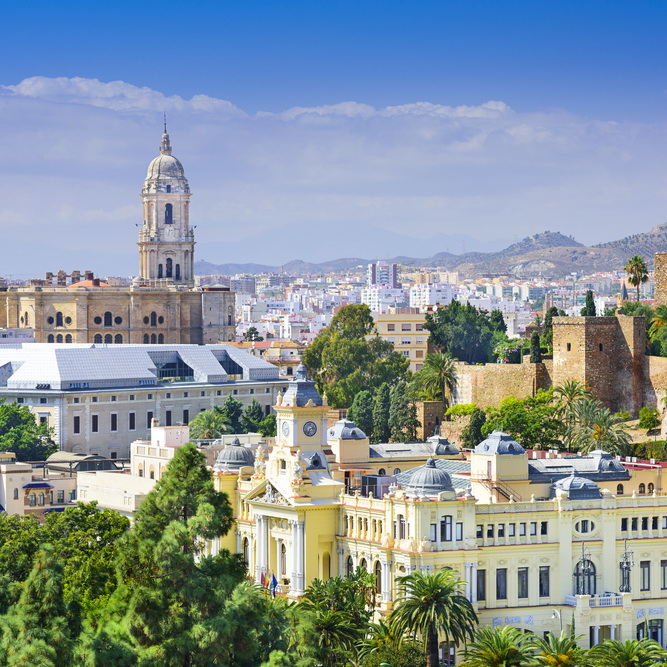
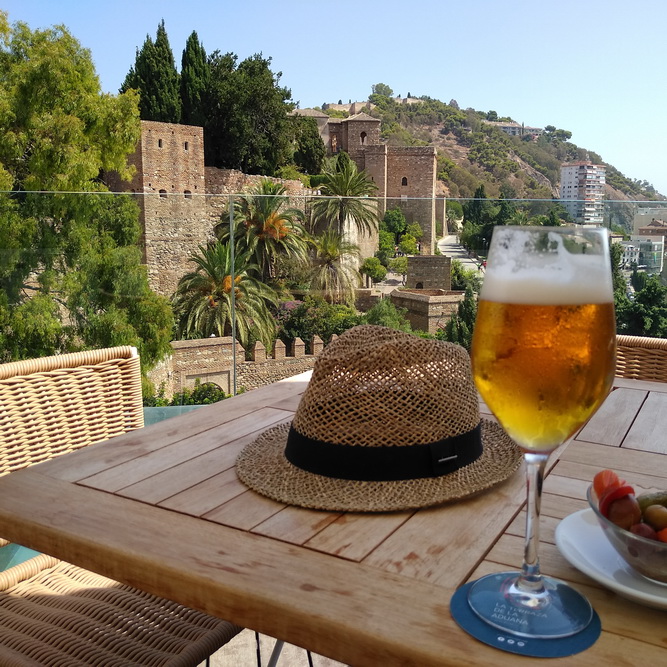
Roman Theatre
Downhill from the Alcazaba (at one of the main entrances), the Roman theatre was rediscovered in the 1950s after being hidden beneath the streets of Malaga for centuries. Now open to the public, visitors can explore this fascinating archaeological site and learn about the city’s Roman past.
Málaga Cathedral
The ‘One-armed Lady’
Known as La Manquita (the one-armed lady) due to one unfinished tower, this Renaissance cathedral with its imposing (perhaps somewhat gloomy) Baroque façade is an iconic landmark of the city. Its interior features impressive artwork and ornate chapels.
Atarazanas Market
One of Spain’s best markets
With local produce from the sea, the sub-tropical Axarquia and the region’s mountains, this bustling market is a paradise for food lovers. Many stalls offer snacks and drinks and there are a few food-stall style bars and restaurants making this a great place to experience the local culinary scene and sample some delicious tapas.
Mercado de la Merced
Near the theatre and Casa Natal de Picasso this refurbished market now also has several stands serving everything from serrano ham to sushi. Lower profile than the Atarazanas and less touristy these days.
Muelle Uno (the port), and Málaga Park
Málaga’s glittering port
This modern waterfront promenade is lined with shops (mostly high-end but there’s also a
‘mercadillo’ with stands selling clothes, jewellery and handicrafts) as well as restaurants, and bars, offering stunning views of the port and the Mediterranean Sea. Here you’ll find the entrance to the Pompidou Centre and between the town and port a lovely shaded canopy walk – ideal for a sunny day.
Directly behind the por
t, Málaga Park is a lovely, shady, green space in the heart of the city. More than a park this is a public botanical garden (one of Europe’s largest) designed by the Marques de Larios and opened in 1897. You’ll find many interesting sub-tropical species, which thrive in the Málaga climate, and the park offers a peaceful retreat from the city heat with lush gardens, fountains, and shaded pathways. Occasionally concerts are staged in the park, and there are a couple of nice bar / Terrazas.
Málaga’s beaches
Something for everyone
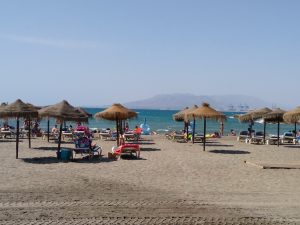
Pedregalejo
Keep it to yourself…
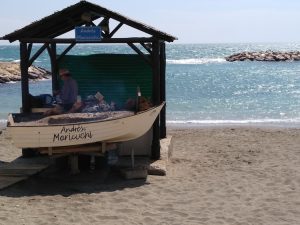
It’s about 5km from the town to Pedregalejo so you might want to rent a bike (you can ride along the promenade without having to worry about traffic) – otherwise there’s a regular bus service.
English Cemetery
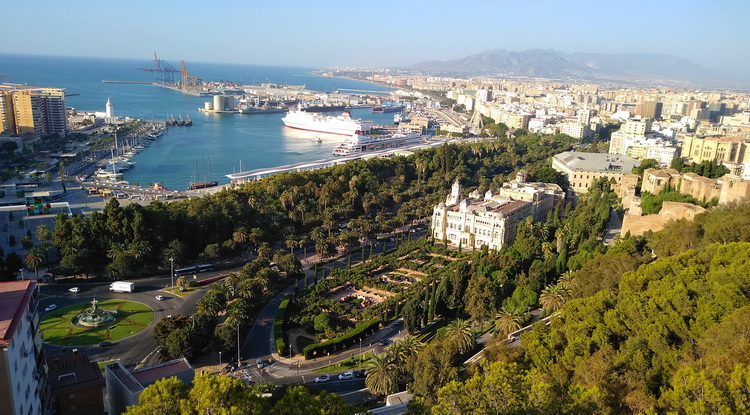
Calle Larios
Elegant shopping
This elegant pedestrian street is the main shopping thoroughfare in Malaga, lined with a wide range of shops, boutiques, cafes, and restaurants. It’s a great place to soak up the local culture, do some shopping, and, of course, enjoy some people-watching.
Things to See and Do in Málaga Province
Ronda
A historic gem in the mountains
Perhaps the most famous of Andalucia’s famous ‘Pueblos Blancos’, the picturesque ‘white villages’ which stretch over the southern mountains, Ronda is so much more than a pretty face.
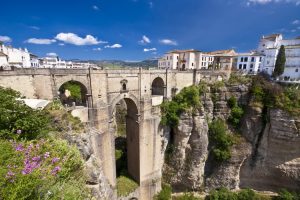
After the Romans came the Visgoths, followed by eight centuries of Moorish rule ending in 1485 with the Reconquista, though the village was a refuge for Moriscos (covert Muslims) for some time afterwards.
Each passing culture has left its mark not least in the three bridges – Romano, Arabe and Nuevo -which span the vertiginous gorges. There are Moorish baths dating back to the 13th century and Spain’s oldest bullring where the peculiarities of the ‘art’ were developed by the local Romero family.
In more recent times Orson Welles and Hemmingway both spent summers here, spreading its fame worldwide, the latter using it as inspiration for a Civil War scene the book For Whom the Bell Tolls.
Ronda sits at the gateway to the Grazalema Nature Park, popular with bird watchers and botanists alike. The limestone sierra, riddled with caves, rises up to over 1600m and is home to many vultures including the threatened Egyptian Vulture.
Puente Nuevo:
Ronda’s most iconic landmark, the impressive Puente Nuevo bridge spans the deep gorge of El Tajo gorge, connecting the old Moorish town with the newer parts of the city. Constructed in the 18th century, the bridge offers breathtaking views of the surrounding countryside and the gorge below.
Plaza de Toros:
Ronda is famous for its bullfighting tradition, and its Plaza de Toros, built in the 18th century in the Mercadiillo neighbourhood, is one of the oldest and most famous bullrings in Spain, frequented by Hemmingway during his stay here as well as Orson Welles and his entourage. Visitors can tour the bullring and its museum to learn about the history and cultural significance of bullfighting in Spain.
Ronda’s Old Town (La Ciudad):
Ronda’s historic Old Town is a labyrinth of narrow cobblestone streets, whitewashed buildings, and charming, shady squares. Explore historic sites such as the Mondragón Palace, the Church of Santa María la Mayor, and the Arab baths. There are plenty of cafes, artisan shops, and traditional Andalusian taverns.
Arab Baths:
Ronda’s Arab Baths, known as the Baños Árabes, are areminder of the city’s Moorish heritage. Dating back to the 13th century, these well-preserved baths feature ornate architectural details, including star-shaped windows set into vaulted ceilings supported by horseshoe arches, and ornate stonework.
Caminito del Rey
Vertiginous walkways
El Caminito del Rey (The King’s Little Path) is a walkway, pinned along the steep walls of a narrow gorge in El Chorro, near Ardales in the province of Málaga.
Originally the path was created as a way to connect the hydroelectric power plants at El Chorro and Gaitanejo.
The path was closed when it fell in disuse but was repaired in 2015 and open to the public. Nowadays it is a guided walk (booking is necessary) of about 7.7 kms with some “up-and-down” in a beautiful scenery……
La Axarquía
The Garden of Málaga
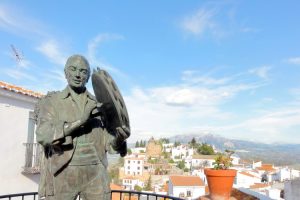
and the busy beaches.
The region boasts a total of 31 Mudejar villages to explore – Cómpeta, Casares, Frigiliana, Nerja… each with its own charm.
Antequera & El Torcal
Moorish monuments and amazing rocks
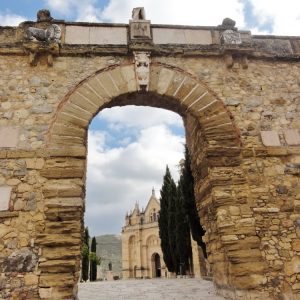
churches, Renaissance fountains and baroque bell towers.
South of the city the Natural Park of El Torcal is well worth a visit for its striking limestone rock formations.
Frequently Asked Questions about Things to See and Do in Málaga
How to get to Málaga?
Getting there
Málaga is the gateway to the Costa del Sol and has fantastic flight connections (though luckily the masses head down the coast to Marbella and Torremolinos!):
- From Heathrow with BA
- From Gatwick with BA, Vueling, TUI or Whizzair;
- From Stansted with Ryanair or Jet2
- From Luton with Easyjet or Ryanair
- From Manchester with Easyjet, Jet2, TUI or Ryanair
- From Bristol with Ryanair or Easyjet
- From Newcastle with Ryanair, Jet2 or TUI
- From Dublin with Ryanair and Aer Lingus
- From Edinburgh with Ryanair
- Other UK airports available, please ask us about these.
Alternatively, if you’re planning an Andalucian touring itinerary, you could fly via Sevilla or Jerez.
When to go to Málaga?
And when not to go to Málaga?
Málaga is an excellent destination all year round. In the summer months it can get very hot (approaching 35-40ºC) so best avoided if you don’t like the heat but it’s right on the sea with some fantastic beaches so a good option for those who like to sizzle.
Away from the heat of July and August the city enjoys a mild climate – balmy in Spring and Autumn and pleasantly cool in the winter (light knitwear with occasional kaguls).
As with the rest of Andalucia the city is best avoided at Easter unless you have a specific interest to witness the processions.
How long to stay in Málaga?
Normally we recommend two or three nights when taken as part of an Andalucía touring holiday . You could see the city’s main sights in two nights but if you want some time at the beach or to take a day trip to Antequera, Ronda or the Caminito del Rey you’ll need at least three.
Three nights are also recommendable if you want to visit all those museums and art galleries, explore the city’s lively flamenco scene or try out it’s many restaurants!
If you fly into Málaga you can stay in the city and see everything – including the excursions – without the need for a car (thus reducing the cost of that extra night!).
What to eat in Málaga?
See above Eating and drinking in Málaga
Our absolute favourite is Sardinas al Espeto (or just about anything they’re serving) in the beach restaurants of Pedregalejo – good value and the very essence of Mediterranean holiday. In the city you can find something for all budgets and tastes but don’t miss the chance to try the local wines – we think you’ll be surprised!
If you travel with Casas Cantabricas you’ll get our own restaurant guide, along with a host of other local information, within your Vamoos App
What to buy in Málaga?
Málaga is renowned for its shopping with a lot of high-end fashion outlets in the Muelle Uno port area, along Calle Larios and around the Cathedral.
For a souvenir with a genuine local link Picasso souvenirs are available in the Picasso Museum
Another good purchase – anywhere in Andalucia but perhaps especially here if it’s at the start of your trip, and especially if it’s warm – is a Spanish fan or ‘abanico’. It’ll serve you well on your travels and make a nice souvenir at the end. There are no-end of shops selling them but look around and you’ll find some good quality and the museum gift shops e.g. the Picasso Museum have some really original examples.
Eating and Drinking in Málaga
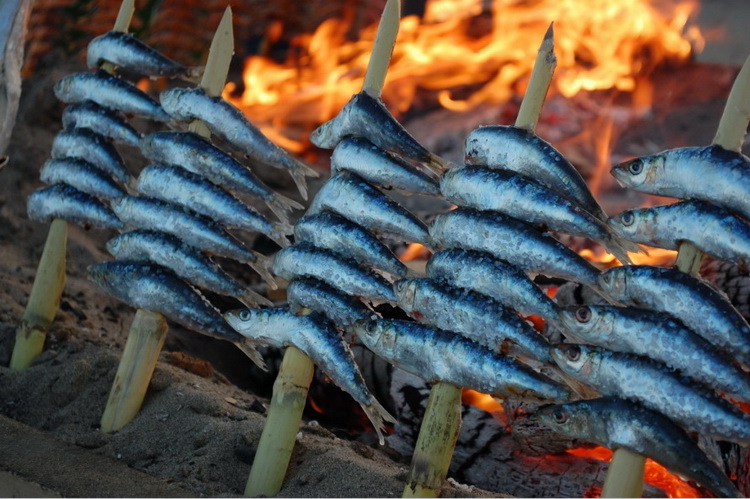
Backed by the mountains and faced by the sea, it has the natural conditions necessary for every kind of produce – from mountain goat and wild boar to the freshest of anchovies and sardines to almonds and olives and exotic mangoes and avocados. Just go around the Central Market of Ataranzas and you will be amazed by the array, quality and choice from the local area.
Here you’ll find the Mediterranean Diet in its natural habitat – healthy, light and nutritious! Fortunately its traditional dishes remain as popular as ever – “sardinas al espeto” (barbequed sardines on a skewer), “pescaito frito” (little fish fried to perfection),” mariscos” (seafood), particularly “gambas” (prawns) and “quisquillas” (shrimp), “ajoblanco” (chilled almond soup with grapes), “ensalada Malaguena”(potato salad with salt cod and oranges),” Pipirrana” (pepper,tomato, tuna and mussel salad), “almendras fritas” (fried
salted almonds) and “chivo Malagueno” (roast kid).
Cakes and pastries are high on the agenda too – “tarta Malaguena” (a cake with almonds, apricots and raisins and sweet Malaga wine), “tortas de algarrobo” (almond and anis biscuits) and “pestinos” and borrachuelos” (sweet fried pastries) are just a few to sample. As with savoury dishes, there is more often than not, an influence from Malaga’s Moorish past.
And where would all these be without wine? The province of Malaga has been producing wine for over 3000 years and is justly famous for its sweet fortified “Malaga” wines and for its sherries. It now however produces some very interesting and innovative reds and whites as well, particularly in the mountains around Ronda where you’ll find award-winning wines of truly surprising quality given the southern latitude.
For a special local treat try “Pajarete” (little bird), an amber coloured liqueur wine, with a special distinctive flavour, is one you should try as an aperitif or a digestif!
Due, somewhat, to the climate, Malaguenos, who enjoy good food in good company, favour “tapas” or “raciones” which can be shared, to full meals. The “tapeo” (literally, doing the round of the bars, eating snacks and drinking) is an essential part of daily life at lunchtimes and in the evenings. And where better to enjoy these pleasures than an informal “chiringuito” (beach bar) or a “taperia” (tapas bar) in the old quarter? Naturally, there is room for fine dining too and the Michelin one star restaurant “Jose Carlos
Garcia” in Muelle Uno, the exciting new port development in the city, is out there for you.
Whatever you choose, be brave and enjoy! Buen provecho!


